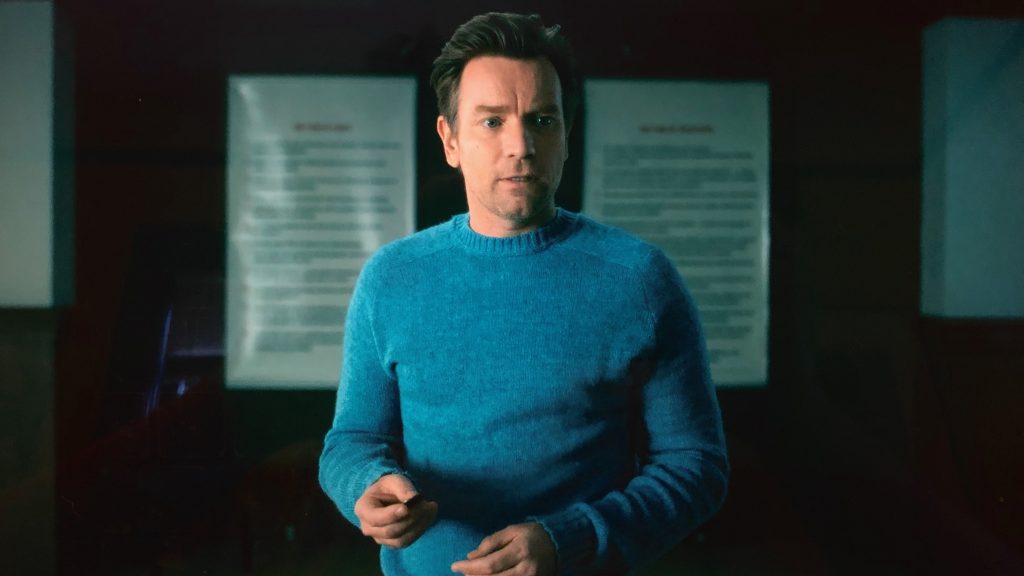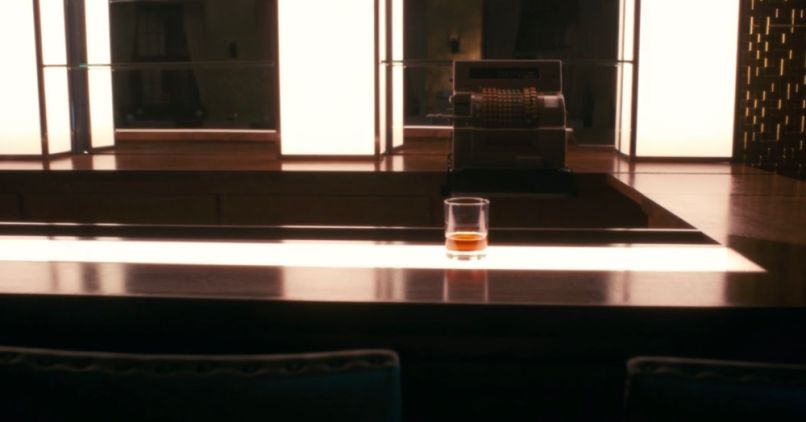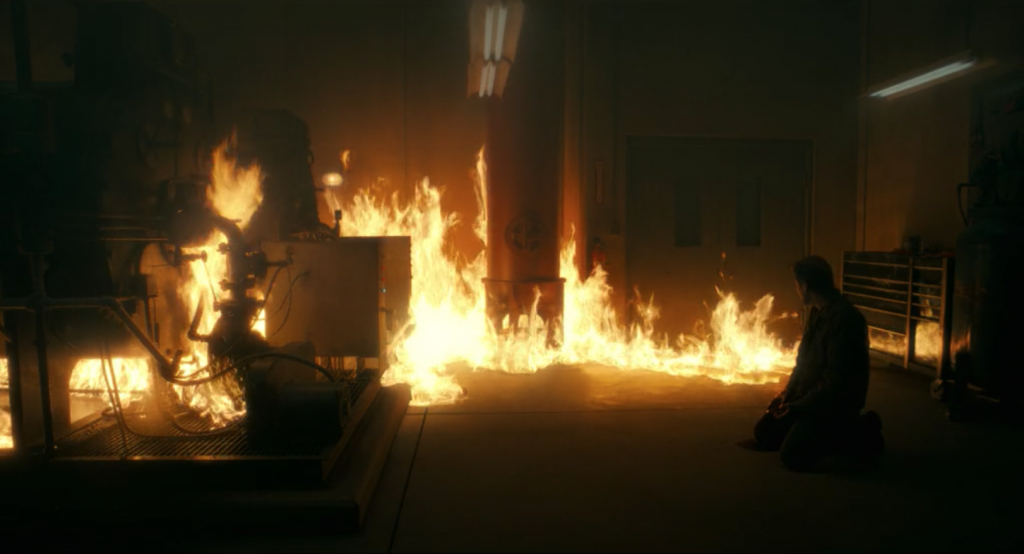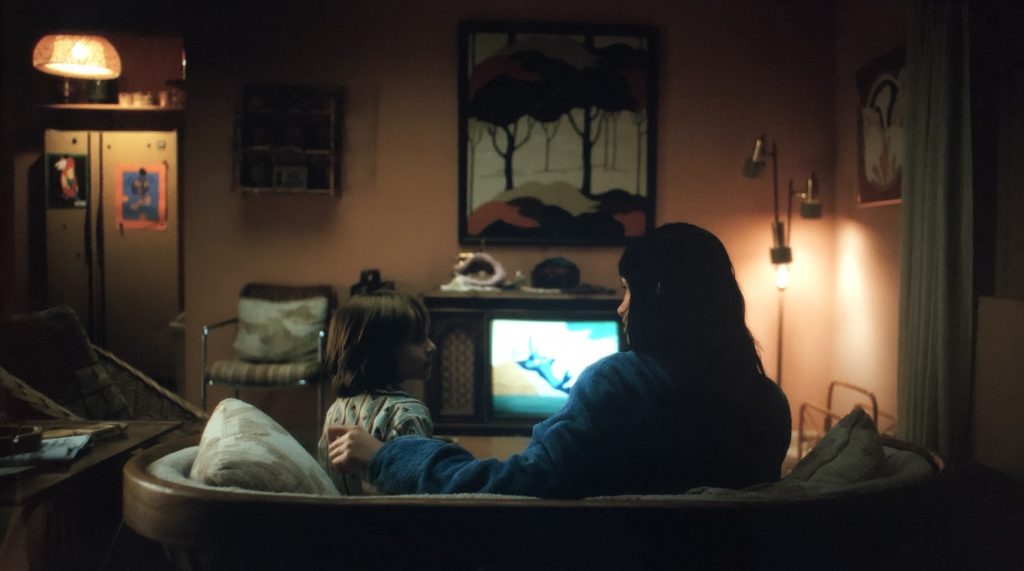
I’m not much of a speech guy, just thought I’d hold the chip and talk about whatever popped up, and um… I’m thinking about my dad. He died when I was five, so the only way I-I really got to know him was when I went dark, when I drank, to dull the-the… Or, uh… Whenever I wanted to break someone’s face, cause the drinking and the temper and the anger… Those things in me were his…
– Dan Torrance, Doctor Sleep (2018)
Upon re-watching the film Doctor Sleep, the sequel to the story of The Shining, focusing on Danny Torrance and his battle with alcoholism much like his father, the color theory I delved into about The Shining applies here as well. (To read the original theory, you can do so here: https://willrhami.com/the-shining-the-past-violence-and-reincarnation) In Doctor Sleep’s film adaptation, the ending of the source material was changed to fit Stanley Kubrick’s interpretation of The Shining, where the Overlook Hotel is not burned to the ground like it is in the book, but is instead left in a hurry by Danny and Wendy, leaving the hotel’s fate ambiguous. This lends to it’s return in Doctor Sleep, done perfectly by writer and director Mike Flanagan. When watching it again, I was curious to see if the color theory would fit in the context of the new film, particularly in the sections featuring the Overlook Hotel.
I decided to watch the Director’s Cut, which included a few key scenes that perfectly fit the color theory, particularly a foreshadowing of the confrontation Danny has with “Lloyd” (in reality it is Jack Torrance, a victim of the hotel and Danny’s father) at the bar in the final act. The shot starts in a dimly lit Golden Room, where the ceiling and floors show an aged but potent yellow, as the red furniture is in complete darkness. The lights from the bar illuminate the countertop, where a glass of yellow Jack Daniels whisky, his father’s favorite drink, waits for Danny.

With yellow representing the past, and red representing the cycle of violence, the omission of red is the perfect way to show what the hotel has become. With no visitors to the hotel, the cycle has been broken, and all that remains is the past; the hotel is sleeping, to an extent. When Danny and Abra return to the hotel at the end of the film, he even says to her, “I need to go wake it up.”
As he enters the hotel, the lights slowly illuminate as he roams the halls, emitting a dim and dreary yellow light onto the walls of the hotel, reminding him of the past, showing it’s history and deterioration. Even things like the wallpaper in the Colorado Lounge that was once white is now yellowed; part of a past long behind them. But as Abra walks in, the hotel’s lights become bright white, illuminating the elements of red throughout the hotel. Someone new has entered the cycle of violence the hotel has created and it becomes itself again as the same events play out like they have time and time again.

The Overlook gives Rose the Hat (best character name and costume ever, by the way) a vision of the death once again through the blood elevator, which she watches in joy, eventually smiling, and leaving the scene. Her confidence and overzealous nature is the eventual lead to her downfall. She is eventually tricked, and ends up being consumed by the ghosts of the hotel who have been released from Danny’s “boxes”, mental barriers in his mind he has used to trap escaped sprits from the Overlook Hotel throughout his childhood. But as the hotel’s past residents see Danny, they see a way to return back to the cycle once again; a surrogate much like they saw in his father Jack and in the old caretaker Mr.Grady. They take him over and chase Abra, the closest thing Danny has to a family, through the hotel with an axe, just like every time before. However, Danny is able to resist them with help from Abra.
With his new clarity, he takes the opportunity to end the cycle permanently by burning the hotel down, like the daughters of Mr.Grady tried to do, and is similar to how the Native Americans attacked the construction site of the hotel as it was being built, as stated in the original theory.

Orange once again represents an in between of the past and violence, as well as the world outside the cycle of the Overlook. In Wendy and Danny’s new home outside Colorado, only a few warm yellow accents and almost no harsh or noticeable reds are in sight. This queues us into the idea that this is a safe place for Danny and his mother, where they are free from the violence of the Overlook and can return to the way things were before.

Another scene showing color theory is the scene where Danny receives his job at the hospice center. The office of the interview being almost an exact replica of the office of the hotel manager in The Shining, with the wall being a very specific orange. The conversations are on completely different topics, but the points are the same.

• An interview for a job with big responsibilities is being held
• The interviewer has a very presidential feeling to him, the perfect American
• The downside of the job is death, which Danny/Jack say they don’t have a problem with
• Both interviews are turning points for the characters; for Jack, it’s where he fell off the edge and gave in to his addictions, and for Danny, it’s where he gave up his addictions for a purpose better than just himself
If the color orange represents the in between of the inevitability of death as well as the past, this provides for an interesting evolution of this concept of orange. The two interpretations of what the color means have similar topics, but drastic differences in the characters’ motives and personalities.
The person Danny has become when the scene takes place is much different than the one we see later on in the film. He is a man who hasn’t used his powers to shine since a young age, and gets a random spark to use it to help a local doctor find his lost watch, leading to the interview. This is the first use of this powers as an adult, which he continues to use in his job in hospice, and later on in the movie to protect Abra.
Orange seen in the interview scene mixes the two key ideas of the past and inevitability of death, not in relation to the cycle of the hotel and its dark pat and cycle of violence, but in the context that everyone has their time pass away. The color in the scene represents a coming to terms with Danny’s life, both his alcoholism and his past trauma in The Shining, and how that can help others going forward by using his shine to help others pass away calmly and give them comfort in their final moments of life. The color represents a transition to acceptance.
In the flash forward eight years later, we see that Danny has made steps to come to terms with both the events of The Shining and with his alcoholism, being sober during that time and still working night shifts at the hospice center. We see him wearing red scrubs after the time jump, showing his acceptance in his role as caretaker of the dying patients, helping them drift off peacefully, finally accepting his name among patients, Doctor Sleep. He has found purpose in his life.

I always love when I am able to watch a sequel like Blade Runner 2049 or Doctor Sleep made by fans that have passion for the source material and want to make the best film they can, at the same time honoring the original and making a new and compelling story. This is hard work, and when they take the time to do it right, it does show that art is still a part of blockbuster culture, it just needs a bit more of a push to larger audiences.
Hello there, thanks for reading this! I hope you enjoyed it and found new meaning in this fantastic sequel. I love how you can reinterpret the meaning behind colors of The Shining into the context of recovery and moving past the things that can hurt you. this film is such more quiet than The Shining and tries something truly different, which I really liked, and I hope others did too. Again, you didn’t already, you can read the first part of this theory centered around The Shining here: https://willrhami.com/the-shining-the-past-violence-and-reincarnation